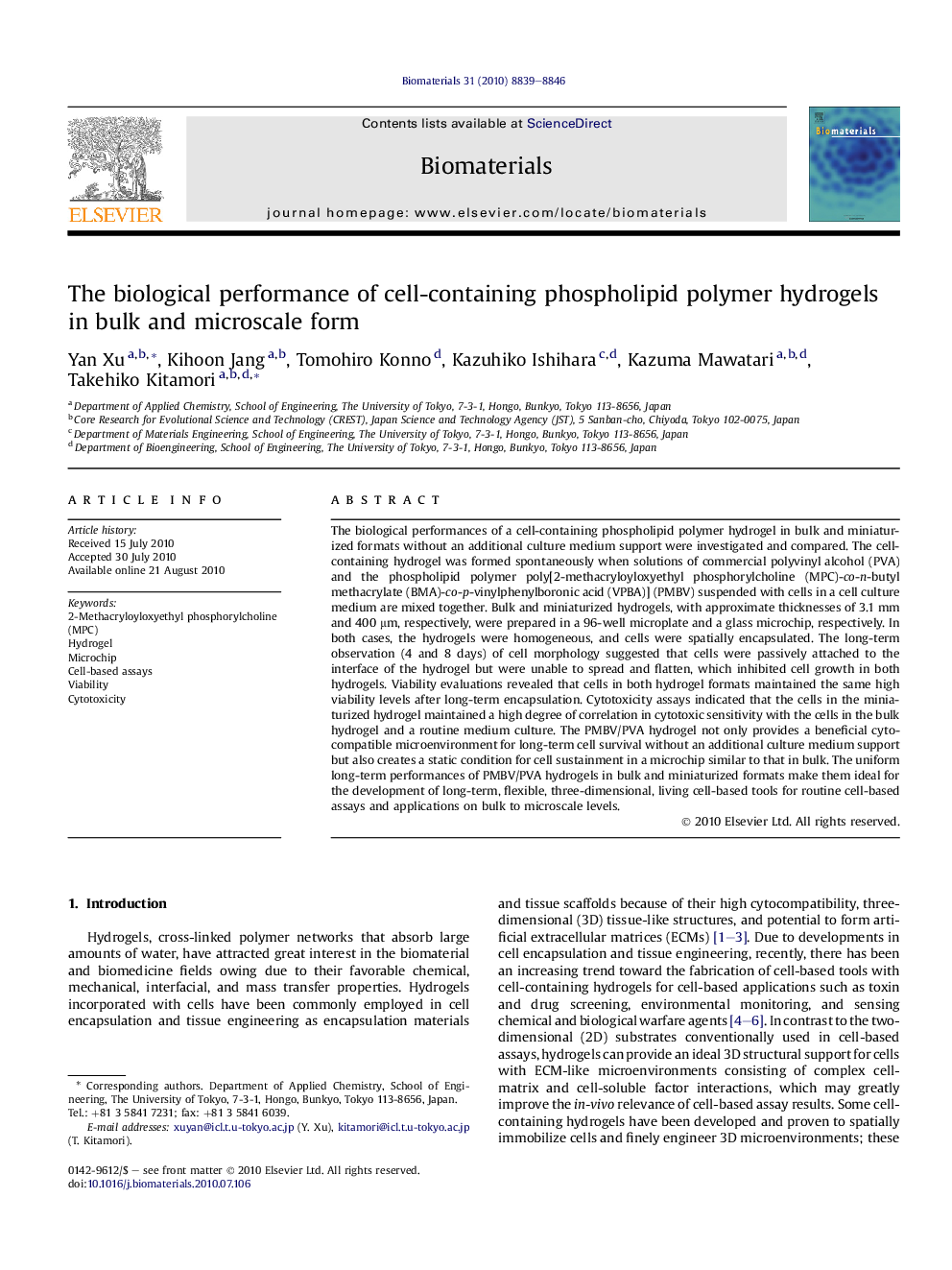| Article ID | Journal | Published Year | Pages | File Type |
|---|---|---|---|---|
| 8728 | Biomaterials | 2010 | 8 Pages |
The biological performances of a cell-containing phospholipid polymer hydrogel in bulk and miniaturized formats without an additional culture medium support were investigated and compared. The cell-containing hydrogel was formed spontaneously when solutions of commercial polyvinyl alcohol (PVA) and the phospholipid polymer poly[2-methacryloyloxyethyl phosphorylcholine (MPC)-co-n-butyl methacrylate (BMA)-co-p-vinylphenylboronic acid (VPBA)] (PMBV) suspended with cells in a cell culture medium are mixed together. Bulk and miniaturized hydrogels, with approximate thicknesses of 3.1 mm and 400 μm, respectively, were prepared in a 96-well microplate and a glass microchip, respectively. In both cases, the hydrogels were homogeneous, and cells were spatially encapsulated. The long-term observation (4 and 8 days) of cell morphology suggested that cells were passively attached to the interface of the hydrogel but were unable to spread and flatten, which inhibited cell growth in both hydrogels. Viability evaluations revealed that cells in both hydrogel formats maintained the same high viability levels after long-term encapsulation. Cytotoxicity assays indicated that the cells in the miniaturized hydrogel maintained a high degree of correlation in cytotoxic sensitivity with the cells in the bulk hydrogel and a routine medium culture. The PMBV/PVA hydrogel not only provides a beneficial cytocompatible microenvironment for long-term cell survival without an additional culture medium support but also creates a static condition for cell sustainment in a microchip similar to that in bulk. The uniform long-term performances of PMBV/PVA hydrogels in bulk and miniaturized formats make them ideal for the development of long-term, flexible, three-dimensional, living cell-based tools for routine cell-based assays and applications on bulk to microscale levels.
